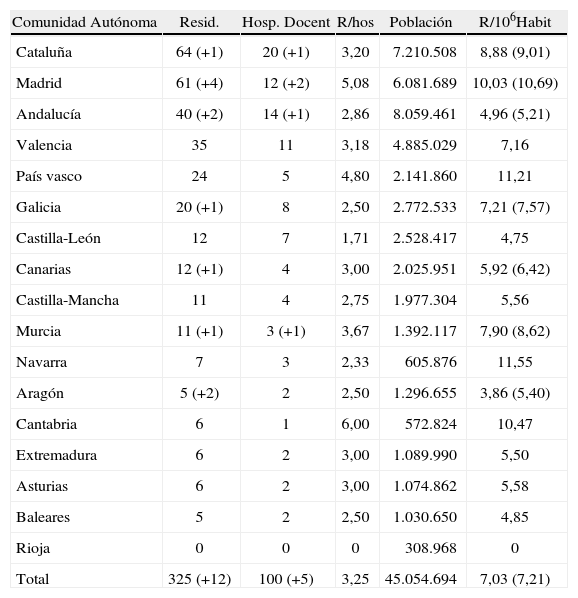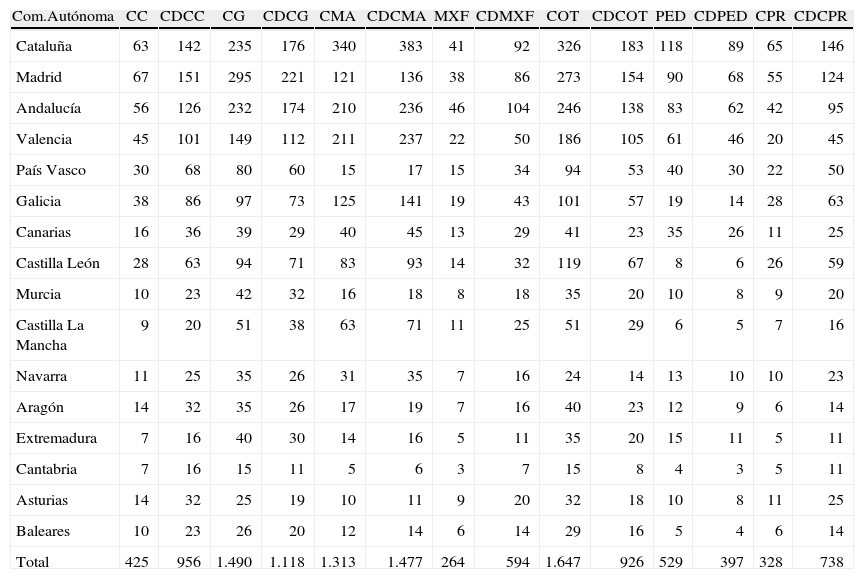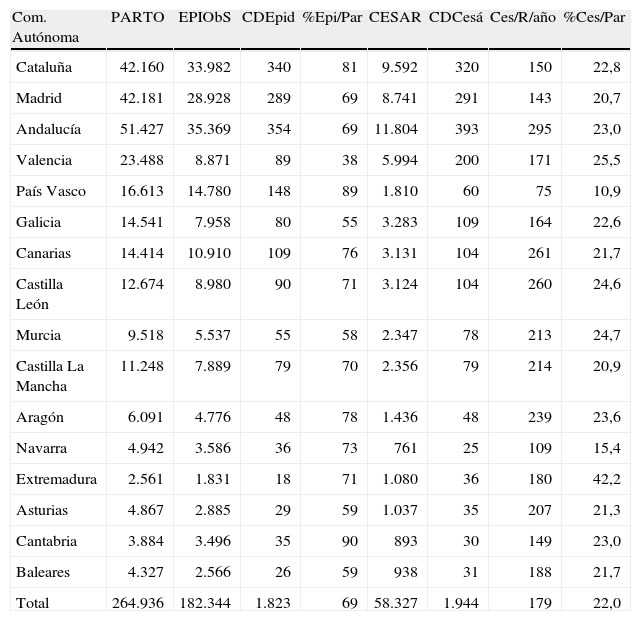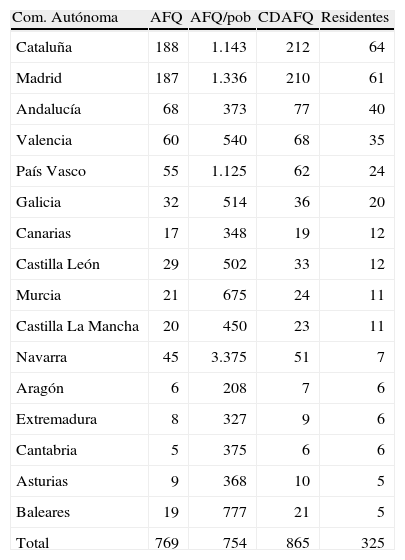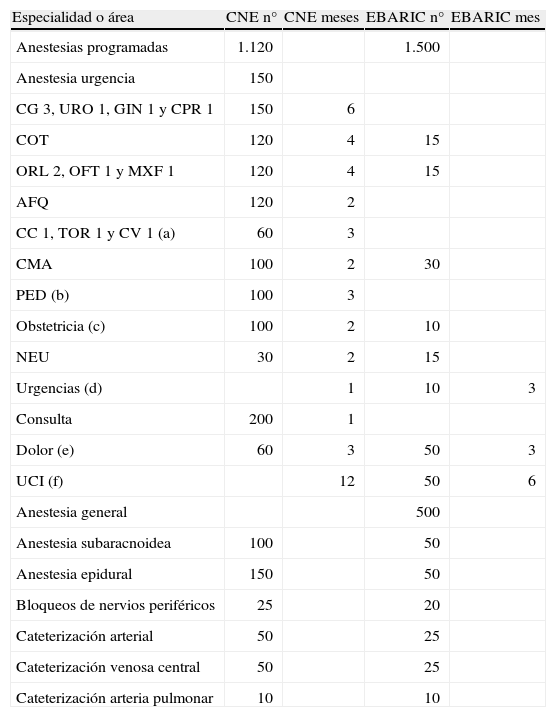Presentar la actividad asistencial y calcular la capacidad docente de los hospitales españoles acreditados para la formación de residentes de Anestesiología.
MétodosEncuesta a los tutores de residentes de los hospitales acreditados en 2008, recabando datos de actividad quirúrgica, obstétrica, dolor, procedimientos y dotación de camas de cuidados intensivos. Se describen los resultados agrupados por comunidades autónomas y se calcula la capacidad docente máxima teórica según las recomendaciones europeas.
ResultadosLos 100 hospitales encuestados forman a 325 residentes al año y podrían teóricamente ampliar su oferta docente, con ciertas limitaciones en las especialidades de cirugía pediátrica, que con 3 meses de rotación sólo permite formar a 397 residentes al año con una distribución óptima de recursos; neurocirugía que con 2 meses podría formar a 442 residentes y cirugía torácica con 1 mes a 479 residentes. En la actualidad hay problemas en algunas comunidades autónomas sólo para anestesia en cirugía pediátrica, cirugía torácica y cirugía mayor ambulatoria. En medicina de cuidados intensivos, aunque la especialidad de Anestesiología tiene 41,6% de todas las camas de críticos, preocupa la existencia de 46 hospitales sin dotación adecuada. Este hecho influye negativamente en la posible acreditación de unidades docentes.
ConclusionesA pesar de las limitaciones encontradas, la encuesta muestra que la capacidad docente es superior a la acreditada y por tanto sería posible aumentar el número de residentes.
Health-care workload and instructional capacity of Spanish hospitals accredited to train residents in anesthesiology
To describe the health-care workload and instructional capacity of Spanish hospitals accredited to train anesthesiology residents.
MethodsSurvey of supervisors of anesthesiology residents in 2008 to determine caseloads in surgery and obstetrics as well as in pain clinics and critical care units. The results are presented for different Spanish autonomous communities. The maximum theoretical capacity for instruction in accordance with European guidelines is calculated.
ResultsThe 100 hospitals surveyed train 325 residents per year and could theoretically increase the training opportunities they offer, within certain limits. Given optimal distribution of resources, the system could train 397 residents per year in pediatric surgery in 3-month rotations, 442 residents in neurosurgery in 2-month rotations, and 479 residents in thoracic surgery in 1-month rotations. Some Spanish communities presently have problems giving training in the settings of pediatric, thoracic, and major outpatient surgery. Furthermore, even though anesthesiologists are presently responsible for 41.6% of available critical care beds, 46 hospitals do not have a sufficient number of beds to give training in this setting. This shortage may have negative repercussions on the accreditation of training programs.
ConclusionsAlthough certain limitations were found, the survey showed that the training capacity of the system is greater than accreditation suggests. It would therefore be possible to increase the number of residents.
Artículo
Comprando el artículo el PDF del mismo podrá ser descargado
Precio 19,34 €
Comprar ahora






